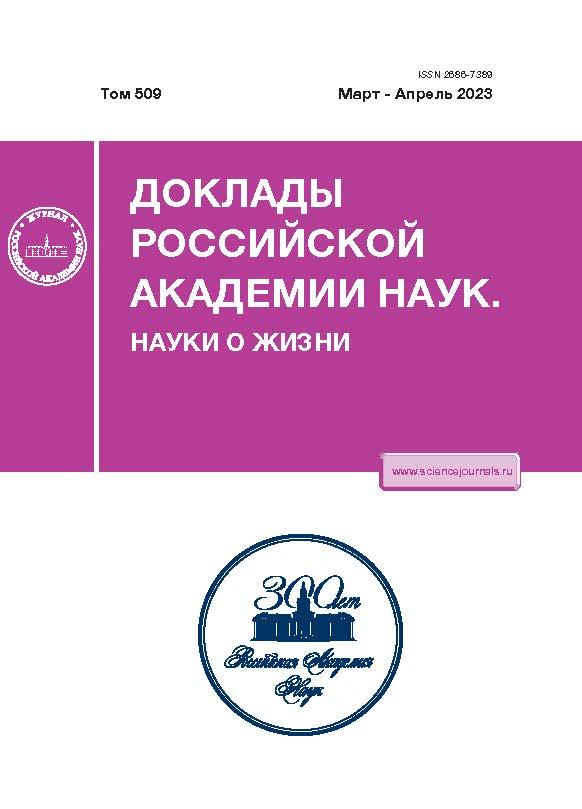PHYLOGENY OF THE DIPUS SAGITTA SPECIES COMPLEX BASED ON THE SEQUENCING OF NUCLEAR GENES
- Autores: Lisenkova A.A.1, Shenbrot G.I.2, Surov A.V.3, Rogovin K.A.3, Nazarov R.A.4, Melnikova M.N.1, Bogatyreva V.Y.4, Undrakhbayar E.5, Lebedev V.S.4, Bannikova A.A.1
-
Afiliações:
- Faculty of Biology, Lomonosov Moscow State University
- Mitrani Department of Desert Ecology, Jacob Blaustein Institutes for Desert Research, Ben-Gurion University of the Negev
- A.N. Severtsov Institute of Ecology and Evolution of the Russian Academy of Sciences
- Zoological Museum, Lomonosov Moscow State University
- Institute of General and Experimental Biology of the Mongolian Academy of Science
- Edição: Volume 509, Nº 1 (2023)
- Páginas: 155-160
- Seção: Articles
- URL: https://vestnik.nvsu.ru/2686-7389/article/view/651128
- DOI: https://doi.org/10.31857/S2686738922700159
- EDN: https://elibrary.ru/NBKKVY
- ID: 651128
Citar
Texto integral
Resumo
The northern three-toed jerboa Dipus sagitta was long considered to be a single polytypic species. Earlier, a high genetic diversity of D. sagitta was revealed on the basis of several mitochondrial and nuclear genes, and the existence of several separate species within it was hypothesized. However, a small number of available nuclear genes prevented the establishment of relationships between identified phylogenetic lineages. Here, we significantly expand the set of utilized nuclear DNA loci, which resulted in a sufficiently higher resolution of the phylogenetic tree for 10 forms of D. sagitta. The identified species structure mainly confirms the topology and relationship of the mtDNA lineages. At the same time, the mitochondrial and nuclear phylogenies are not completely consistent. Hence, a part of the genetic lineages of D. sagitta is apparently a product of reticular evolutionary processes. This taxon is thus the diverse species complex D. sagitta sensu lato, in which long-diverged lineages are not always reproductively isolated.
Palavras-chave
Sobre autores
A. Lisenkova
Faculty of Biology, Lomonosov Moscow State University
Autor responsável pela correspondência
Email: biolisenkova@yandex.ru
Russian, Moscow
G. Shenbrot
Mitrani Department of Desert Ecology, Jacob Blaustein Institutes for Desert Research, Ben-Gurion University of the Negev
Email: biolisenkova@yandex.ru
Israel, Midreshet Ben-Gurion
A. Surov
A.N. Severtsov Institute of Ecology and Evolution of the Russian Academy of Sciences
Email: biolisenkova@yandex.ru
Russian, Moscow
K. Rogovin
A.N. Severtsov Institute of Ecology and Evolution of the Russian Academy of Sciences
Email: biolisenkova@yandex.ru
Russian, Moscow
R. Nazarov
Zoological Museum, Lomonosov Moscow State University
Email: biolisenkova@yandex.ru
Russian, Moscow
M. Melnikova
Faculty of Biology, Lomonosov Moscow State University
Email: biolisenkova@yandex.ru
Russian, Moscow
V. Bogatyreva
Zoological Museum, Lomonosov Moscow State University
Email: biolisenkova@yandex.ru
Russian, Moscow
E. Undrakhbayar
Institute of General and Experimental Biology of the Mongolian Academy of Science
Email: biolisenkova@yandex.ru
Mongolia, Ulaanbaatar
V. Lebedev
Zoological Museum, Lomonosov Moscow State University
Email: biolisenkova@yandex.ru
Russian, Moscow
A. Bannikova
Faculty of Biology, Lomonosov Moscow State University
Email: biolisenkova@yandex.ru
Russian, Moscow
Bibliografia
- Шенброт Г.И. Географическая изменчивость мохноногого тушканчика Dipus Sagitta (Rodenita, Didodidae). Подвидовая дифференциация на территории Восточного Казахстана, Тувы и Монголии // Зоологический журнал. 1991. V. 70. № 7. P. 91–97.
- Шенброт Г.И. Географическая изменчивость мохноногого тушканчика Dipus Sagitta (Rodenita, Didodidae). Общий характер внутривидовой изменчивости и подвидовая дифференциация в западной части видового ареала // Зоологический журнал. 1991. V. 70. № 5. P. 101–110.
- Lebedev V.S., Bannikova A.A., Lu L., et al. Phylogeographical study reveals high genetic diversity in a widespread desert rodent, Dipus sagitta (Dipodidae: Rodentia) // Biological Journal of Linnean Society. 2018. V. 123. № 2. P. 445–462.
- Cheng J., Ge D., Xia L., et al. Phylogeny and taxonomic reassessment of jerboa, Dipus (Rodentia, Dipodinae), in inland Asia // Zoologica Scripta. 2018. V. 47. № 6. P. 630–644.
- Cheng J., Lv, X., Xia L., et al. Impact of orogeny and environmental change on genetic divergence and demographic history of Dipus sagitta (Dipodoidea, Dipodinae) since the Pliocene in Inland East Asia // Journal of Mammalian Evolution. 2019. V. 26. № 2. P. 253–266.
- Sambrook J., Fritsch E.F., Maniatis T. Molecular cloning – a laboratory manual. Sec. ed. N.Y.k: Cold Spring Harbor Lab. Press, 1989. 385 p.
- Lebedev V.S., Shenbrot G.I., Krystufek B., et al. Phylogenetic relations and range history of jerboas of the Allactaginae subfamily (Dipodidae, Rodentia) // Scientific Reports. 2022. V. 12. № 1. P. 842.
- Tamura K., Stecher G., Peterson D., et al. MEGA6: Molecular Evolutionary Genetics Analysis Version 6.0 // Molecular Biology and Evolution. 2013. V. 30. № 12. P. 2725–2729.
- Nguyen L.-T., Schmidt H.A., Haeseler von A., et al. IQ-TREE: a fast and effective stochastic algorithm for estimating maximum-likelihood phylogenies // Molecular Biology and Evolution. 2015. V. 32. № 1. P. 268–274.
- Chernomor O., von Haeseler A., Minh B.Q. Terrace aware data structure for phylogenomic inference from supermatrices // Systematic Biology. 2016. V. 65. № 6. P. 997–1008.
- Huson D.H., Bryant D. Application of phylogenetic networks in evolutionary studies // Molecular Biology and Evolution. 2006. V. 23. № 2. P. 254–267.
- Suchard M.A., Lemey P., Baele G., et al. Bayesian phylogenetic and phylodynamic data integration using BEAST 1.10 // Virus Evolution. 2018. V. 4. № 1. vey016.
- Swofford D.L. PAUP*: Phylogenetic analysis using parsimony (* and other methods), version 40b10: 40b10. Sunderland: Sinauer, 2003.
Arquivos suplementares














